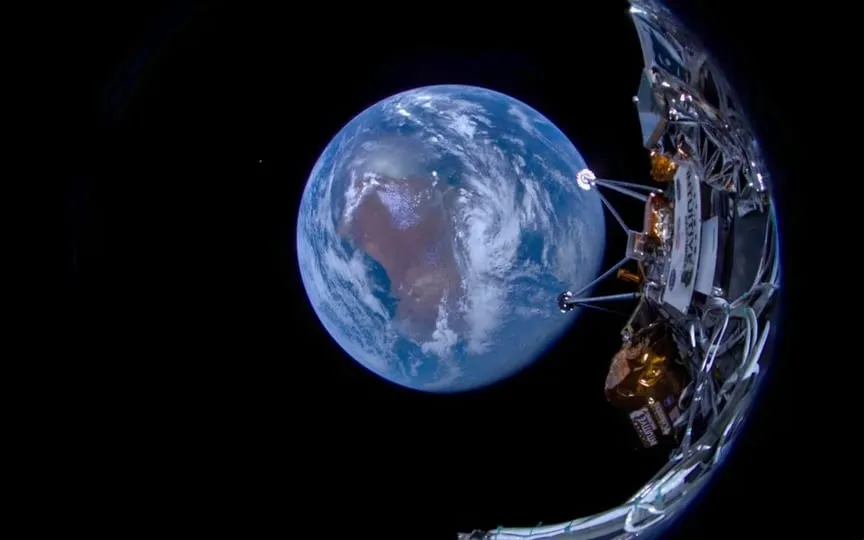Intuitive suffers major setback as Odysseus lander topples on lunar surface, resulting in mission failure
The United States achieved a major milestone in space exploration as the Odysseus lander successfully touched down on the moon’s south polar region. However, the historic moment was marred by unexpected challenges as the spacecraft, the first US-built one to land on the moon in over five decades, landed on its side due to a mishap during descent. Intuitive Machines CEO, Steve Altemus, revealed that the spacecraft had encountered a setback when it “caught a foot” during landing.
Despite the unexpected deviation from the landing plan, Altemus assured that the Odysseus lander remains in the immediate vicinity of the intended landing site and most of the scientific instruments are still operational. Tim Crain, chief technology officer of Intuitive Machines, hailed the landing as a “magical day” at a press conference on Friday.
The chosen landing site near the crater Malapert A, although rugged and cratered, has enormous scientific significance. Scientists expect that there may be frozen water in the area. critical to sustaining future lunar missions and establishing permanent lunar bases.
Although the landing went smoothly, the aftermath brought unexpected challenges. The tilt of Odysseus caused a delay in taking images of the landing, complicating efforts to determine its exact location on the lunar surface.
Despite the setback, the successful landing on the moon emphasizes the growing role of private entities in space research projects.
As Odysseus begins its seven-day mission, which will be powered by solar energy until the Earth’s shadow covers the landing site, Nasa remains optimistic about the scientific insights it will produce. The deployment of instruments like Embry-Riddle Aeronautical University’s EagleCam promises to capture detailed images of Odysseus and its lunar environment, further enriching our understanding of Earth’s celestial neighbor.




